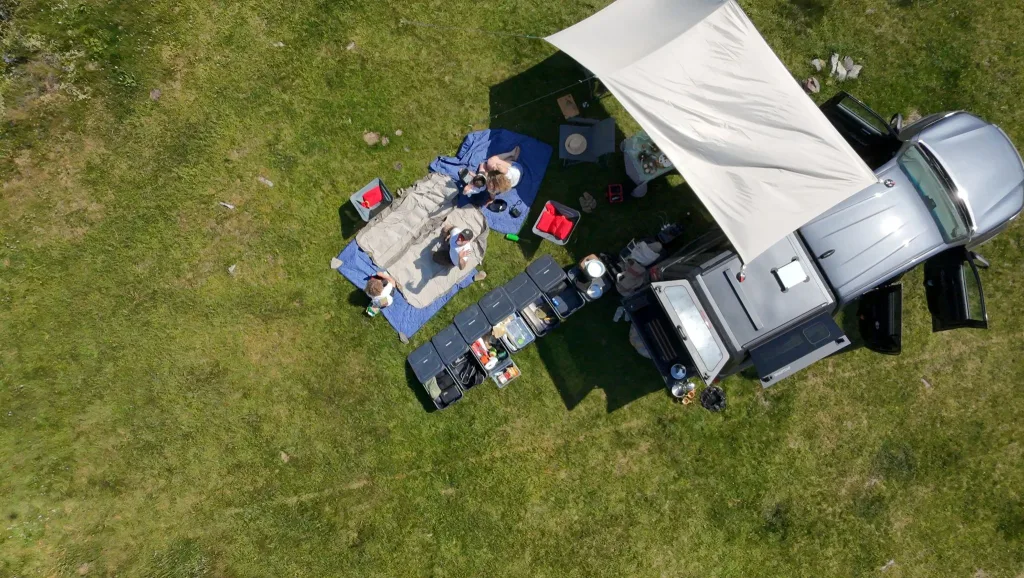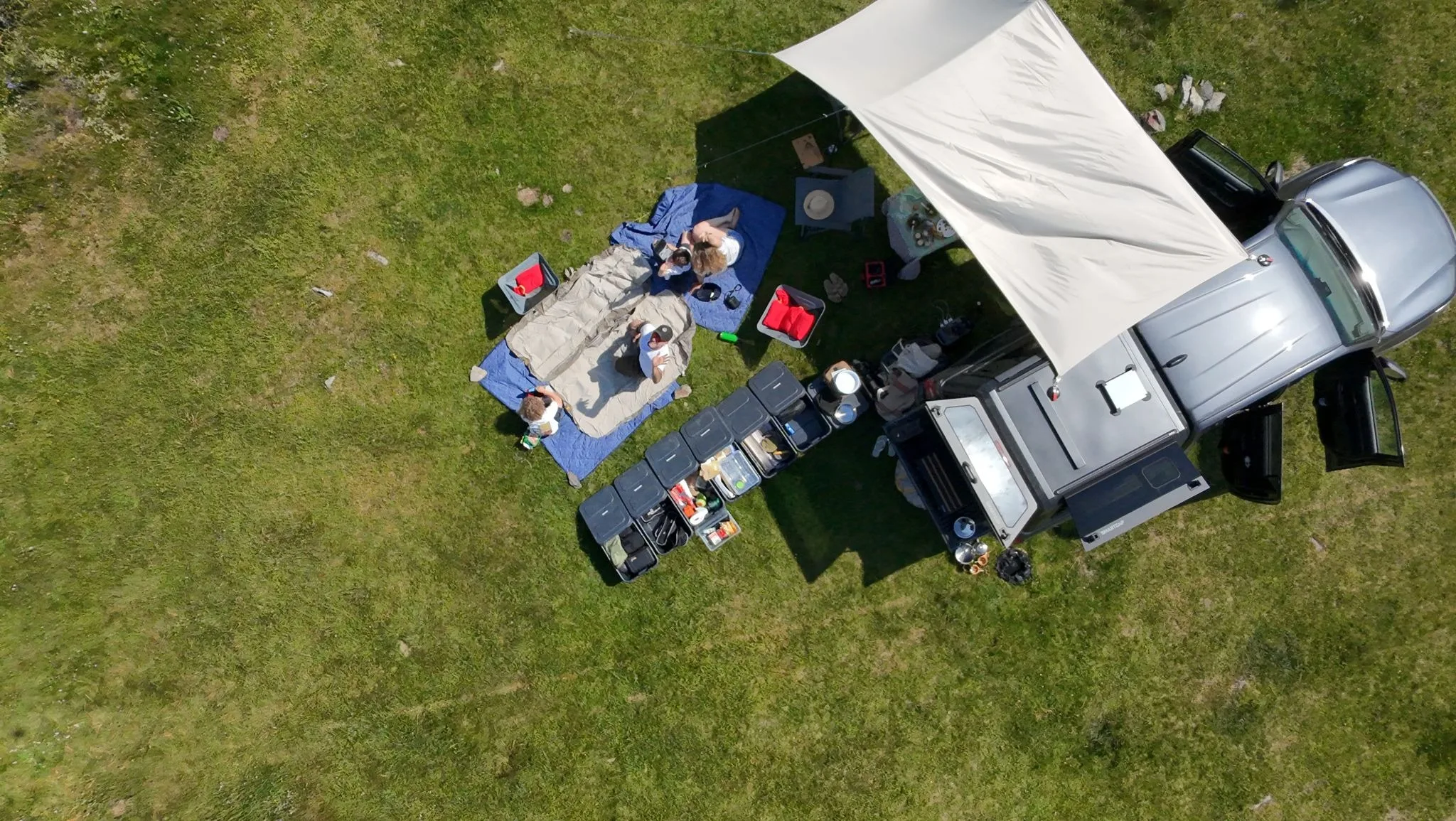How an obsession and a technical mindset led me to tackle the problem of coupling personal data with knowledge. Or how I ended up building a new communication platform.
The Problem with Language
My company Communication Band is, rather obviously, about communication. More specifically, it aims to address the problem of human language. Language’s limited bandwidth and low efficiency in transferring information (while being great for socializing) has been known for 300 years. It is a rarely addressed issue in the mainstream for a variety of reasons I will not go into here (let’s just say politics and marketing have a strong interest in the status quo and let your conspiratorial imagination take it from there).
Being a practical person who likes solving things, who gets joy from moving between “why is there never reception in Italy?” and building satellite-based Wi-Fi in our car, I kept hovering around finding a solution to the problem of language. I knew it would involve technology (when you only have a hammer…). So I split the work Communication Band is focused on.
- Work on a book exploring the language problem, aiming to inspire solutions.
- Focus on everyday unsolved problems caused – in effect – by language.
Working on the book will take forever and is not the subject of this post. (if you’re interested in the process, thinking and ideas, you can follow here).
Problems are what we will discuss below.

There Are Three Ways to Build – I Chose Pain
When searching for problems to solve, one can choose between three strategies.
One – search for a problem worth solving. It requires learning the subject matter in depth and though it can be achieved to an extent (as much of my career can testify), I chose not to.
Two – focus on the solution. Usually this means a technology in search of a problem (e.g., Google Docs can now create folders via AI prompts, which takes longer than doing it manually). I’ve taken the “technology-first” path before and will try not to repeat it.
Three – focus on a problem you already have. One you’ve struggled with for a while and in which you’re likely an expert. And given you’re not a rare snowflake (usually not), there are probably others with that exact pain. Define it precisely (not trivial), solve it (if it were trivial, it wouldn’t exist), find the others and you have a start.
In the past years, our family encountered multiple occasions which we came to call “A knowledge availability problem”. Need to find a house and you know there is a large unpublished inventory? It’s a knowledge availability problem. Want to know how much you spend, what you own, owe and how to improve your taxes? It’s a knowledge availability problem. Want to know how balanced your kids’ nutrition is? How many calories you consumed vs burned? They are all knowledge-availability problems.
Translated to my framework, they’re communication problems.
On the one end there’s you – your data and preferences. On the other – knowledge. Connecting them involves communication which today is forced to be done using language. Defining the issue in words in your head, explaining it to a search engine, GPT, or people; scheduling meetings with experts; collecting what you perceive as relevant data; verbalizing highlights; receiving explanations; prioritizing, absorbing, building mental models, deciding what, how and when to act. So much friction, inefficiency and effort! So we solve far less than we want, or should. And for not solving, we pay in time, money and health.
Access to the Building Blocks – or No Game
To solve it, three components need to exist: access to data, access to knowledge and the ability to make them work together.
I went to work.
The rise of LLMs hinted at the possibility of better access to knowledge, not because they can generate language, but because they were trained on presumably knowledgeable sources. The fact that they provide access to this knowledge through language is a necessary evil, one to be addressed in the future.
Next – choosing a domain where there is access to data. Houses not on the market? Data not accessible. It exists among gossiping neighbours, the mailman and the water company, but it is not digitized. Besides, it was not painful enough for me.
So I chose finance.
I built a prototype. It worked, but I had to abandon it after two months. The data part was too fragile (open-banking, regulations and aggregators not reliable enough). There were also too many dimensions that are, for now, out of reach (assets, liabilities, insurance, taxes). Financial knowledge is also very local, requiring LLMs to operate at a territory-level domain-expert standard (they are not far).
Wellbeing: The Initial Frontier
Another topic has been close to my heart for over 30 years, one filled with data and knowledge and full of unsolved problems, one in which I am a (relative) expert: wellbeing, specifically sports and nutrition.
I will pause here for a second. I can hear readers who are close acquaintances sneer at my choice of words. “Relative expert?” “Close to heart?” Maybe after an Ironman, several ultramarathons and hundreds of marathon-distance runs (some starting at 03:00 so I could take the kids to school on time), “an obsession” would be more accurate.
Anyways… I’ve always had issues with both training and nutrition. Did I consume too much junk (pizza, ice cream, beer, wine)? Should I eat more protein or carbs? Am I missing vitamins? Is a long run after little sleep really a bad idea? Am I just being lazy? What is the best way to lose a little body fat? What about strength training, HRV, REM, stress, lab results, blood pressure, colds, back pain?
So I built another prototype.
Ottavia Is Born
I love the data part in sports (ok. I love data in general).
It started with Suunto, when connecting to satellites still required a wire. I switched to Polar and for the past 15 years, a stream of Garmin devices (some donated to fish after windsurfing incidents). I know exactly what is being collected and why. Conveniently, API research on data depth and growth potential also pointed to Garmin (though I now own several other wearables, in beta).
I exported my physical and activity data, built scripts to normalize it, prompts to interpret nutrition, additional ones for lab results and scripts to shape everything into something LLM “knowledge” could reflect on. I then evaluated different foundation models. It wasn’t as simple as I expected, but it worked. Since all the elements, the data and even the knowledge, move in time, evolve in depth and must have minimal friction to become habitual, it was obvious this had to become a dedicated product. Using ChatGPT for everything is like thinking there is no need for CRM because Excel exists, or that hardware alone will exist in the age of AI. Imagination is easy; reality less so.
And so Ottavia was born.
I defined what I thought were the absolute minimum requirements, designed a user interface and talked to people and artificial intelligences. I then built a hit-the-ground-running R&D team, personally financed it and executed a new zero-to-one platform (having done it several times before has its advantages).
LLMs, Friction and First Principles
As always, things did not go according to plan.
For starters, the desired outcome, quality replies in the interchange of data and knowledge, proved non-trivial and unreliable. To the point that I started questioning the hype (and the Nvidia stock price). I saw firsthand how hard it is to marry LLMs and structured data and how unstable, buggy and random some multibillion-dollar services still are. I had to remind myself we were paddling to catch a wave, not in calm waters.
The other murky domain is deciding how many features and how much interface are enough.
Both are meant to reduce friction between the user and the solution and both form the communication layer that is the core problem to be solved in this endeavor. But they are non-binary. There is no single user and no single problem in the domain, which itself is not a single thing. So we (soon it became not just me; luckily some of the best people in the industry are by my side) made decisions guided by our values and goals. For example, we decided early that privacy was core. So we built the service with no cloud storage and no signup. Users’ data remain local and private. Since we consider ourselves a communication platform, not AI, not a chat, not a bot, not a diet app and not a robotrainer, we built toward that focus early. For example, agency: the ability to push answers to users without requiring them to initiate or even know what to ask. It proved a killer feature for early users.
The 1000-Task Threshold and First Users
I have a signpost measurement for when a solution is ready to see its first users. The tasks-plus-bugs count should read 1000. We were at 642 when Ottavia went live. A coincidence that it matches the 30 percent AI-efficiency increase? Maybe. Or perhaps it confuses correlation with causation. Anyways, this is when building in the dark ended and feedback began. We gave it to a few dozen people and collected feedback through conversations with each of them. We approached with realistic (even pessimistic) expectations but were surprised by the enthusiasm and need for a solution. Apparently I’m not a snowflake. Other people struggle with their nutrition, training and wellbeing too. Go figure.
Was it a runaway viral success? Come on.
As Reid Hoffman said, “If you are not embarrassed by the first version of your product, you’ve launched too late.” But we got 100% of the initial users asking to keep using the service as it evolves. And so we are. Evolving like a radioactive mushroom.
As the first user, I can testify that Ottavia became a major part of my daily routine. It made me eat better, sleep better, use screens differently and feel more motivated to exercise. And that’s through dozens of pre-release versions with error-rates, blunders and crashes that drove me crazy and had me question everything more than a few times. Ottavia is much better now and we are excited and confident (forgive the LinkedIn jargon) about the abilities and solutions it will provide.
Oh, and we also have a unique business model we cannot wait to build and test.
A Communication Road Trip
From time to time, between the regular monthly publications on technology, philosophy, the human condition and language, I will share how things progress with Ottavia.
For the foreseeable future I will continue doing it using my arch-enemy: language.
But perhaps soon, in the span evolution would not even consider a blink of an eye, we will be less dependent on language for a fundamental aspect of being: our wellbeing.
